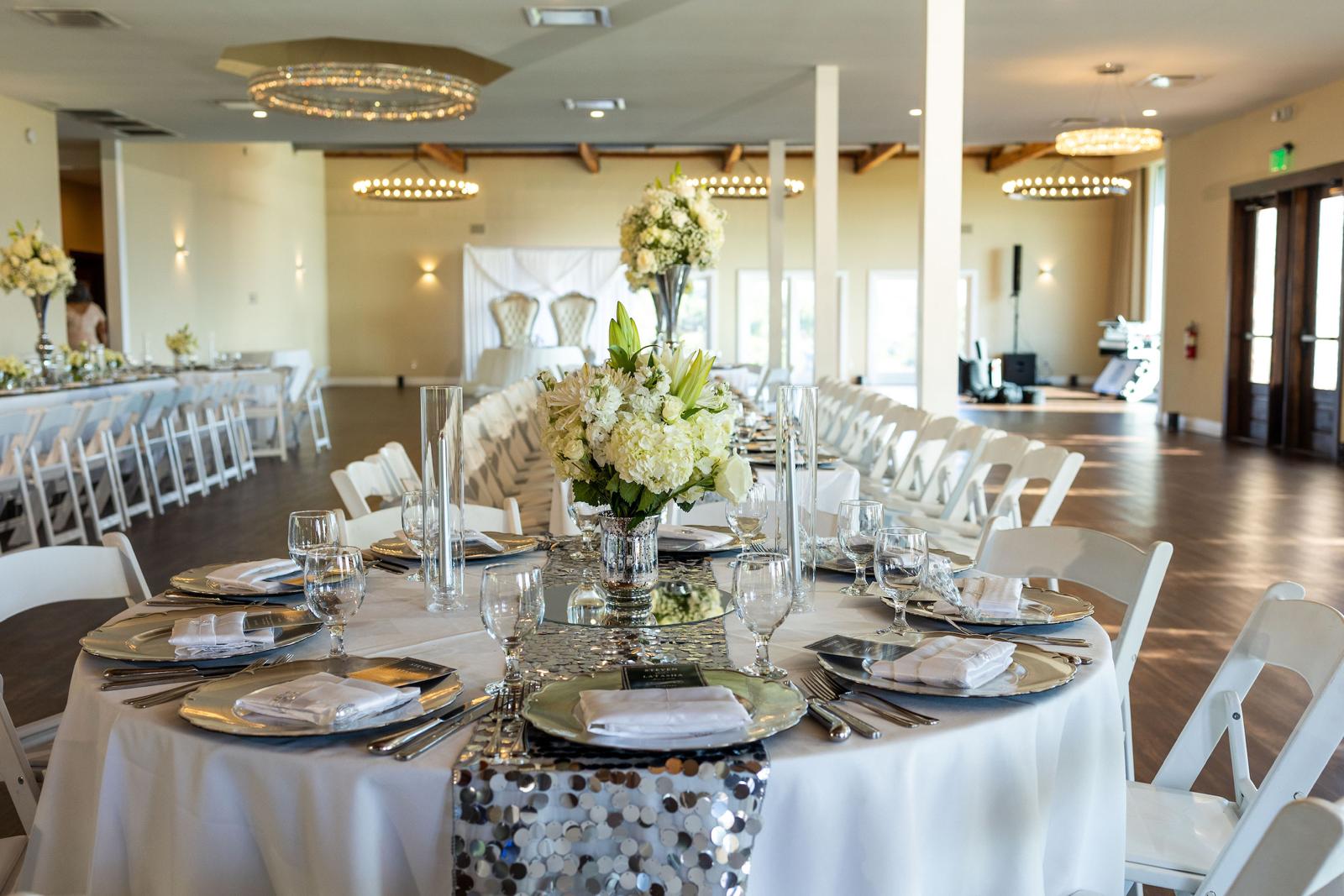
Weddings are always a chaotic affair if not implemented with the right vision and team at hand. One of the bigger concerns of any betrothed couple is the seating arrangement. From assigning seating to the theme and layout of tables, there’s plenty to consider while planning your reception.
It’s not mandatory to have assigned seating at a wedding, although most couples choose to do so. Assigned seats seem to make things easier at any type of sit-down dinner event. It first guarantees that every table will be fully occupied.
Additionally, things can quickly become complicated for the employees without designated seating, particularly for plated dinner service. In reality, a lot of wedding reception locations need assigned seating.
It can first appear intimidating to choose seating arrangements for your wedding guests. However, it may be enjoyable once you get the hang of it! We’ve put up the best guide to organizing your wedding seating chart and show you creative layout options to maximize your venue and time spent with loved ones.
Read on to feel inspired!
Tips for Assigning Seating
This information is for you whether you’re a couple preparing for your special day or a wedding planner handling the finer details:
-
Pick the Right Table Shape
While we’ll talk more about table shapes in length later in the post, here’s a brief overview to get you thinking. You’ll need a game plan for your tables before you begin seating guests because the size and shape will determine how many people can be placed at each one.
There are typically four conventional possibilities for reception layout and table shapes: round, rectangular, oval, and square.
There are advantages to various table configurations: The number of people who can sit around rectangular tables increases, and conversations between guests are made simpler.
Conversely, round tables are the most common choice, giving your guests more space to move around.
-
Seat Friends the Closest
A terrific approach to recognize your wedding party’s important position and ensure your best friends surround you at the reception is to sit at a head table with them (and their dates, if there is space!).
Whether it's a sweetheart table or buddies, they have ordinary seating people who are familiar with each other, ensuring everyone is comfortable and enjoying the reception to the fullest. Grouping guests is an excellent example of getting the correct energy, mingling, and enjoying.
Your wedding party should be at the third-best table in the room, with your sweetheart at the first, your parents at the second-best table or tables, and you at the third-closest table or tables. Of course, you should be the closest to the dancing floor!
-
Find the Best Seats for Family
The parents, grandparents, and siblings who weren’t at the wedding party would often sit at the same table at the reception. This provides everyone with an additional opportunity to get to know one another and enjoy the light of your big day.
While all of your visitors will be delighted to attend and partake in your celebrations, it’s unlikely that anybody will be happier than your parents.
Of course, dealing with divorced parents (or other more complicated family situations) may be challenging. Consider having two tables that are equally adjacent to the head table.
If relations between certain important people are tense, place one person at each table or seat them the furthest from each other.
-
Include a Children’s Table or Corner
If you have many kids attending your wedding, one tactic is to seat them all together at a separate kids’ table or corner, where you can even have fun crafts and games to keep them entertained.
Additionally, try not to place the children’s table far away from where their parents are seated, despite the temptation to put the younglings in a corner.
Younger kids may become nervous when they glance around and don’t see their parents (or vice versa). If your ring bearer or flower girl are the only children, seat them with their parents.
-
Skip Seating Singles Together
Weddings can add a lot of pressure on your single friends and family members. So, it would be best if you didn’t highlight their relationship status by grouping them. Resist the desire to set up a distinct "singles" table because doing so can make your guests uncomfortable.
If you intend to pair them up, do so on the side. You can subtly seat your cousin and your former co-worker next to each other. Make the best decision you can while attempting to be considerate of your visitors.
-
Include Digital Layouts
The conventional method is to sketch out the room’s layout on a poster board, including every table and chair. Place chairs on your diagram using sticky notes of various colors.
The modern technique is to create a seating plan online. These apps make it simple to rearrange the chairs for the hundredth time. Sharing the URL makes it simple to collaborate if you utilize web-based tools. Any software with 3D rendering aids in your ability to envisage your event.
Table Layout Configurations to Consider
The conventional long, rectangular tables and the symmetrical arrangements of circular tables are acceptable. Still, new trends are starting to emerge, so there is no reason to stick to conventional shapes.
In addition to being visually beautiful, your layout’s primary objective should be to encourage interaction and inclusivity among your visitors. Here are a few original methods you can use to accomplish that goal:
-
Snake Tables
In outdoor settings, snake or serpentine tables are a bold, eye-catching design choice. These several curving tables pushed together are ideal for making the most of the unique area if you have a large venue.
When combined with zigzagging string lights above, the serpentine tables can also give seated visitors a magnificent and fanciful feeling. This design invites intimacy with the people and the surroundings and is a definite improvement over rectangular table settings.
-
Geometric Configurations
Depending on your perspective, three rectangular tables can be arranged in a U, C, or N shape. You can add tables on each side to accommodate more guests and lengthen the ends.
This layout of two adjacent tables encourages bonding across the board, unlike long, rectangular tables, which can frequently feel frigid and make it difficult to initiate conversations.
The X shape is a simple yet effective structure that accentuates a more subdued environment, such as a box-shaped room or a large open field. Depending on your preference, you can choose to have one giant X or several smaller ones; either option is easily doable.
-
Combination Layout
As weddings begin to move away from the requirement for symmetry and precision and toward a more laid-back and informal atmosphere, a mix-and-match layout is also gaining popularity.
Since this design accommodates any oddly shaped space or outdoor situation and highlights your authenticity, you choose a more artistic yet functional setting.
The possibilities are unlimited with combinations of round and rectangular tables or additional parts of winding plains.
Hire the Best Wedding Planners in Texas
When making these decisions, leave enough room for workers and visitors to walk comfortably, especially in high-traffic areas like restrooms and entrance/exit points.
Your reception area is like a blank canvas waiting for you to paint it, and the table arrangement you choose will set the tone for all subsequent design decisions.
Making these choices can be difficult, so leave the preparation to the pros like those at SPC Wedding & Event MGT. We’ll go above and beyond to make your ideal wedding come true!




Comments